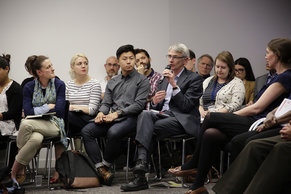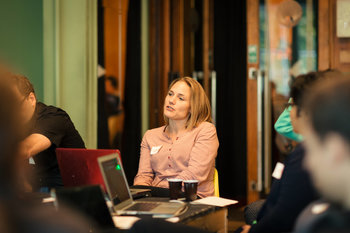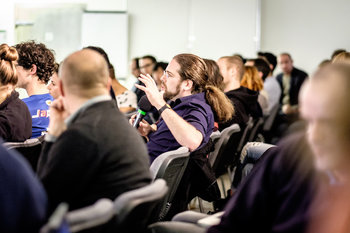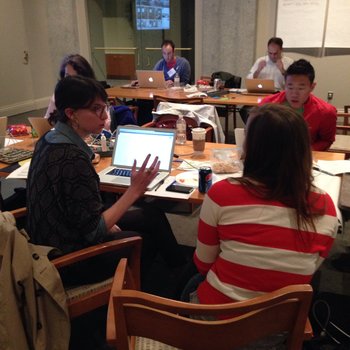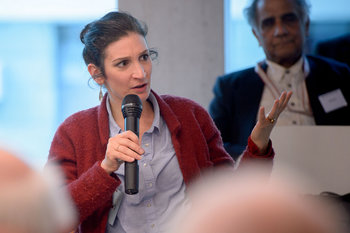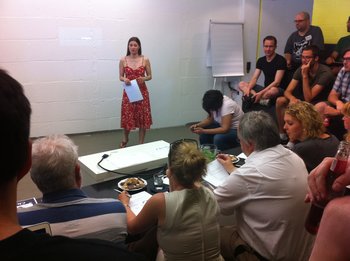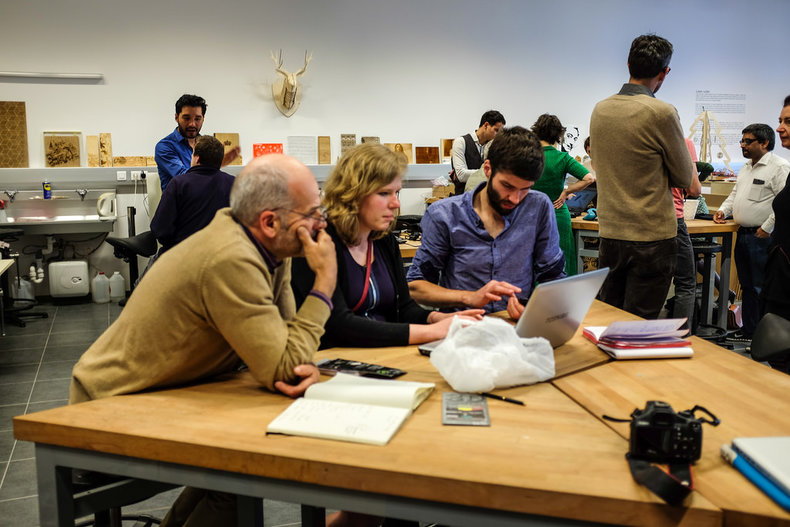
Business Units
Business units may provide user stories or detailed requirements depending on their role in the project. Generally speaking, business units have the last word on functionality, features and quality requirements.Operations
Operational requirements such as maintenance features of software. Operations teams may also contribute constraints such as those related to the capabilities of a production line.Customers
Customers such as a lead user may contribute user stories or ideas for usability and quality. For example, "As a customer with kids, I'd like basic control buttons on the back of the television for the times when I lose the remote."Users
Users may be asked to contribute ideas for functionality, features, usability and quality. Users of business software and processes may be primarily interested in productivity features. For example, "As an Order Manager, I'd like to see all active orders in a single screen, because I need to see that dozens of times a day."Subject Matter Experts
Requirements from subject matter experts in areas such as architecture, engineering, design, usability, technology, construction, legal and compliance. For example, an information security consultant who contributes non-functional requirements to a bank's infrastructure project.Summary
Stakeholder requirements are goals, criteria, expectations, constraints and specifications that are identified by those with a stake in a strategy, policy, program, project or decision.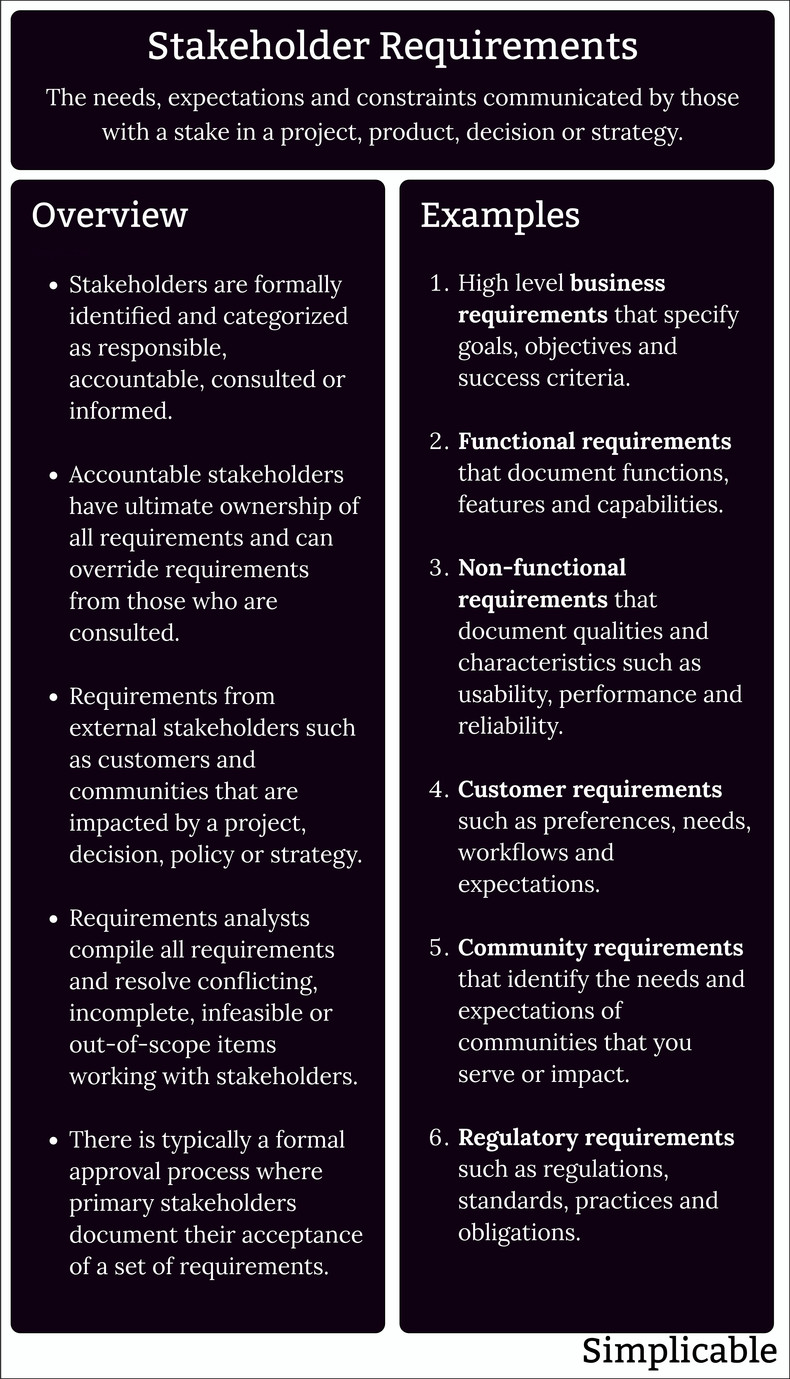
| Overview: Stakeholder Requirements | ||
Type | ||
Definition | Requirements that are collected from stakeholders such as business units, operations teams, customers, users, communities and subject matter experts. | |
Related Concepts | ||



